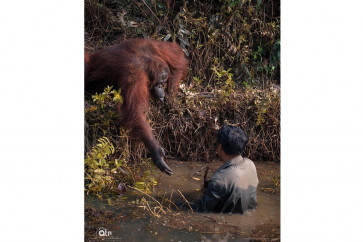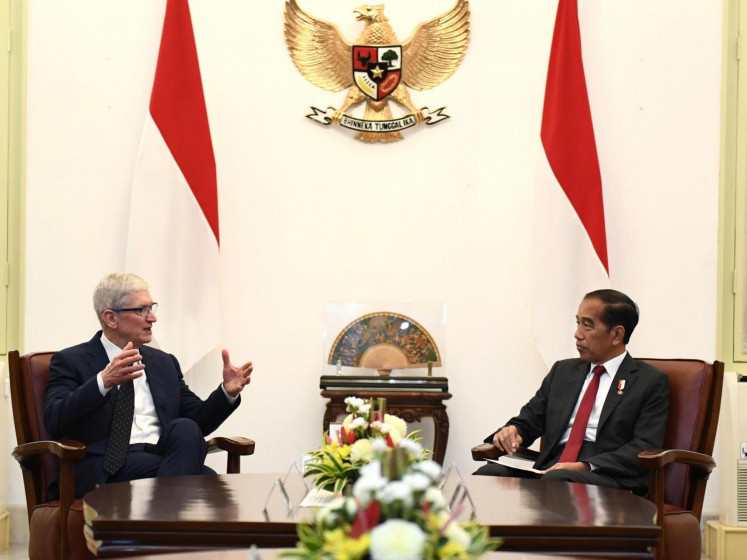Earth Manual Project a creative way to learn disaster readiness
Of days gone by: The Lost Homes project is meant to instill empathy while easing the survivors’ healing process
Change Size

Of days gone by: The Lost Homes project is meant to instill empathy while easing the survivors’ healing process.
Through its adorable designs and smart concepts, the Earth Manual Project exhibition draws the public’s interest to learn about disaster readiness.
Situated on the Ring of Fire, Indonesia is no stranger to earthquakes, with major disasters recorded all over the archipelago throughout history.
While one cannot certainly stop natural disasters from happening, what one can do is learn, and what better nation to learn from than Japan?
Japan’s geographical situation puts it in an area prone to earthquakes and tsunamis, most notably the 2011 Tohoku earthquake, which was recorded at 9.1 on the Richter scale and followed by a 40.5-meter-high tsunami.

Indonesia, which grappled with two tsunamis in the Sunda Strait and Sulawesi last year, could certainly learn a few things. However, graphs and statistics can only do so much for the public.
“The problem is, when we talk about disasters, there are not many people who are interested because it’s quite a heavy subject,” said Purwoko Adhi Nugroho, the Japan Foundation’s Japanese studies and intellectual exchange program officer.
“Disasters are always linked to destruction and victims, so people aren’t keen to talk about them, even though they are very important.”
To address this problem, the Japan Foundation came up with Earth Manual Project, which takes an art and design approach to conveying disaster readiness messages.

The project eschews cold numbers for projects you can see and touch, created based on extensive research and interviews with survivors.
Earth Manual Project was first unveiled in Kobe, Japan in 2013, and has traveled around the globe, including to the Philippines, Thailand, the United States and most recently to Jakarta.
Running from May 2 to 26 at Dia.Lo.Gue, South Jakarta, the exhibition showcases the works of 12 artists from across Asia, such as RooSuFlood of Thailand, Ikaputra from Indonesia and Shigeru Ban from Japan.
Ikaputra, an architect and associate professor at Gadjah Mada University, created the Core House, a minimalist shelter unit designed to be expandable in the future so as to suit the occupants’ needs easily.

Ikaputra created the Core House following his discussion with the residents of Kasongan village in the aftermath of the 2006 Yogyakarta earthquake.
Shigeru Ban, a Japanese architect and Kyoto University professor, created the Paper Partition System 4 (PPS4), a partition system for evacuation facilities.
Using paper tubes for its posts, beams and joints along with a canvas partition, the system is designed to create both privacy and a sense of order through its design, with 1,800 sets used across 50 shelters in the wake of the Tohoku earthquake in 2011.
When massive flooding hit Thailand in the same year, a group of Chulalongkorn University graduates collected local information and news materials for the national broadcasting service that ended up not being used. The group, known as RooSuFlood, then used the information to create a series of animated videos covering every stage of the disaster.

Some works on display are meant to uplift the spirits of disaster survivors, such as the Ayala Museum’s “The Filipino Spirit is Waterproof” slogan made into posters during the 2012 Manila floods in the Philippines.
Other projects support the healing process, such as Japanese architect Osamu Tsukihashi’s Lost Homes. In the project, university students created pre-disaster miniature models of areas devastated by the 2011 tsunami, working with survivors to benefit their healing process as well as the students’ empathizing abilities.
According to Adhi, all of the featured projects were curated by the Design and Creative Center Kobe (KIITO), based on the accuracy of the content, the design aesthetics, and the project’s sustainability.
“The works we exhibited here were curated from the full list of projects displayed. We wanted the projects to suit Indonesia contextually.”
The exhibition also featured a discussion panel on disaster response and screenings of Mira Lesmana’s movies Nyanyian Musim Hujan (Rainy Season Song) and Pesan Dari Samudra (Message from the Ocean). A workshop on creating wayang (puppets) from garbage will take place on Thursday and Friday.

— Photos courtesy of The Japan Foundation









